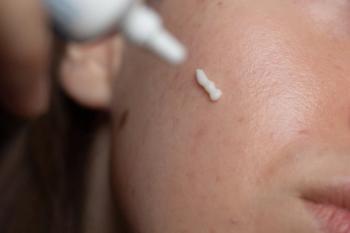
A Clinician’s Perspective of RAD 2025: Part 1
Key Takeaways
- Atopic dermatitis is a complex, heterogeneous disease requiring individualized treatment approaches that consider psychosocial impacts and symptom burden.
- Emerging considerations like AD-associated alopecia necessitate a broad differential diagnosis for scalp symptoms and hair loss.
Maureen Offiah, MD, reflected on the key takeaways as an attendee at the 2025 Revolutionizing Atopic Dermatitis (RAD) Conference in Nashville, Tennessee.
“We had a great session with a wonderful patient advocate who was gracious enough to share her story with us of living with atopic dermatitis most of her life. From her story and from everything she shared, we're able to see how this disease is a multi-dimensional, multi-factorial, heterogeneous disease that can take on different forms depending on what stage a patient is in life. It was a reminder for us to really listen to our patients,” said Maureen Offiah, MD, in an interview with Dermatology Times.
Offiah, a board-certified dermatologist at Hattiesburg Clinic in Mississippi, attended the 2025 Revolutionizing Atopic Dermatitis (RAD) Conference in Nashville, Tennessee, and shared key highlights on atopic dermatitis (AD) that she will take back to her practice and patients.
Early sessions at RAD focused on the psychosocial impacts of AD, detailing how chronic itch, often compared to a pain syndrome, can significantly impair patient quality of life. Mental health effects, such as anxiety, depression, and family-wide impact, were discussed in detail. Offiah noted that discussions focused on the need to individualize treatment by addressing not just skin clearance but also the burden of symptoms such as itch and sleep disturbance.
A particularly impactful segment to Offiah included a patient advocate’s testimony, which provided clinicians with insight into the lived experience of AD. The overall message was that clinicians should actively listen to patients and resist the tendency to standardize care across presentations. Offiah emphasized that seemingly minor body surface area involvement can hide the true severity of the disease, particularly when symptoms disproportionately affect quality of life.1
The sessions also introduced emerging considerations such as alopecia in AD. Offiah highlighted a discussion on scalp pruritus and burning, which expanded the diagnostic framework to include AD-associated alopecia alongside more commonly considered conditions such as allergic contact dermatitis, seborrheic dermatitis, and psoriasis. The session emphasized the importance of maintaining a broad differential when evaluating hair loss or scalp symptoms in patients with AD.2
Treatment-focused panels provided an in-depth comparison of the currently FDA-approved systemic and topical therapies, including biologics and JAK inhibitors. Offiah expressed her appreciation for the way these therapies were analyzed in detail, particularly around the mechanisms of action, patient selection, and long-term safety. As Offiah noted, the abundance of therapeutic options now available, although effective, also requires careful consideration. The RAD sessions helped clarify optimal strategies for aligning specific agents with individual patient needs.
References
- Shahriari M. The psychosocial burden of AD. Presented at: 2025 Revolutionizing Atopic Dermatitis Conference; June 6-7, 2025; Nashville, TN.
- Mayo T. Complex cases: AD & hair loss. Presented at: 2025 Revolutionizing Atopic Dermatitis Conference; June 6-7, 2025; Nashville, TN.
Newsletter
Like what you’re reading? Subscribe to Dermatology Times for weekly updates on therapies, innovations, and real-world practice tips.


















